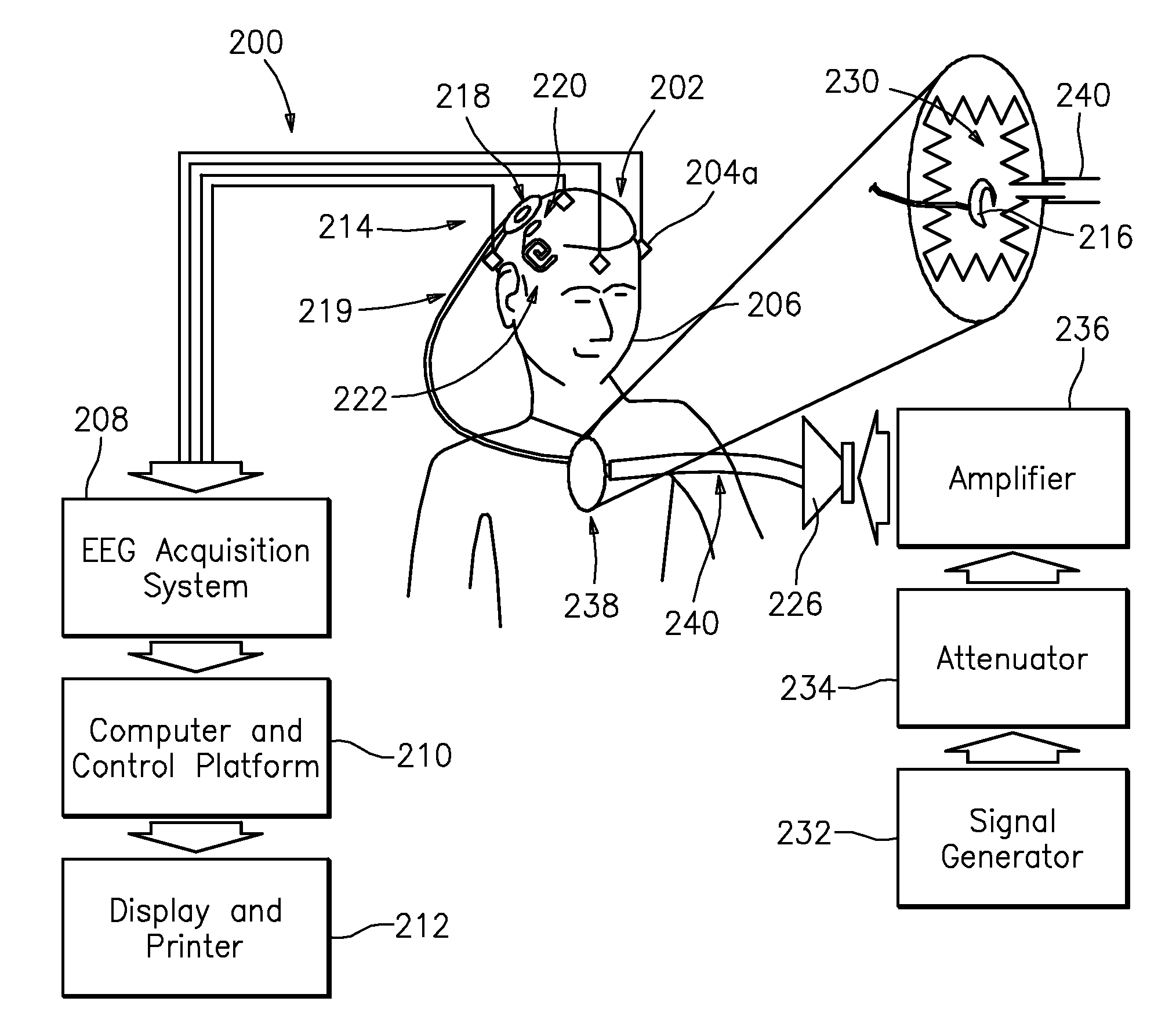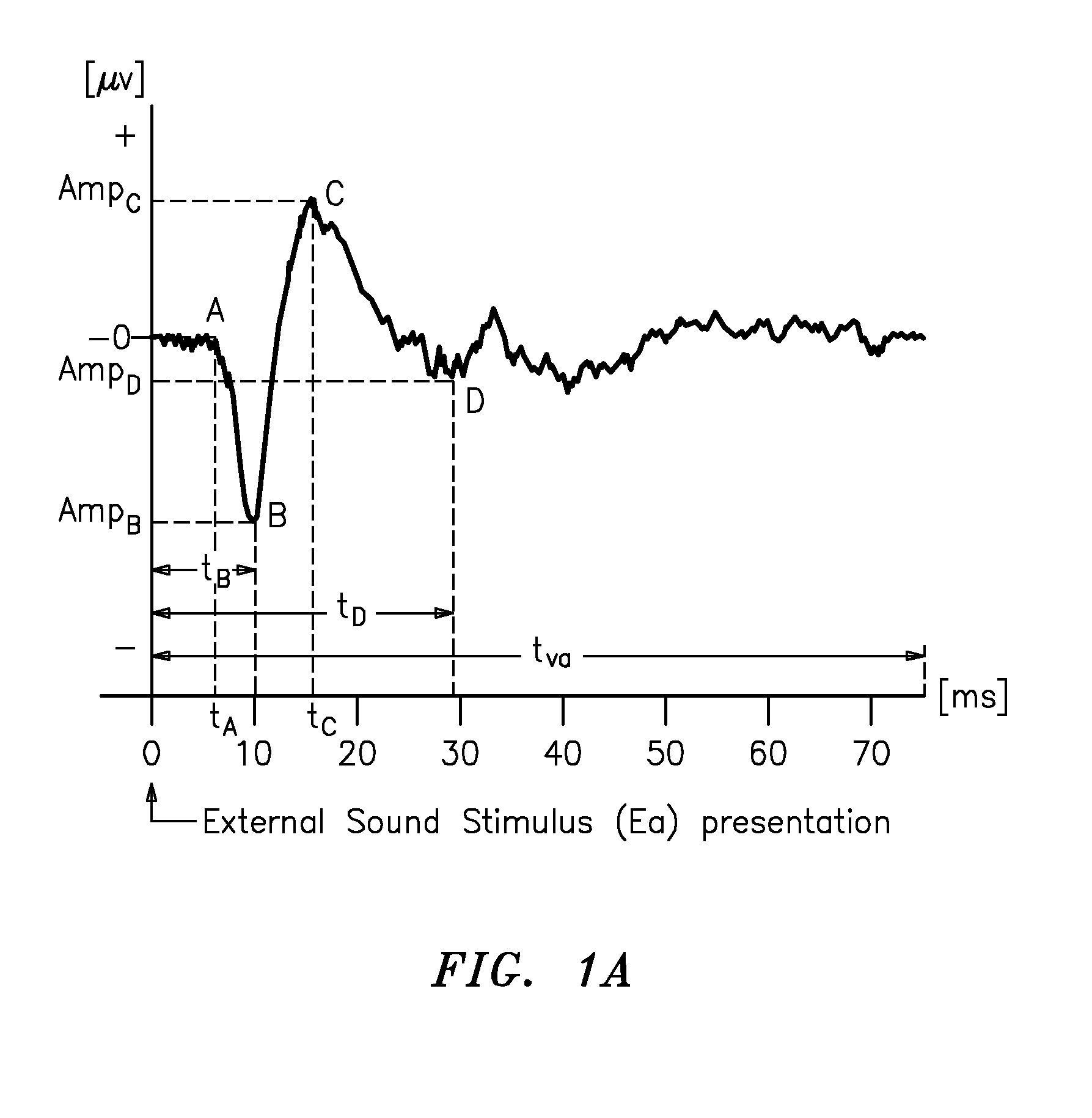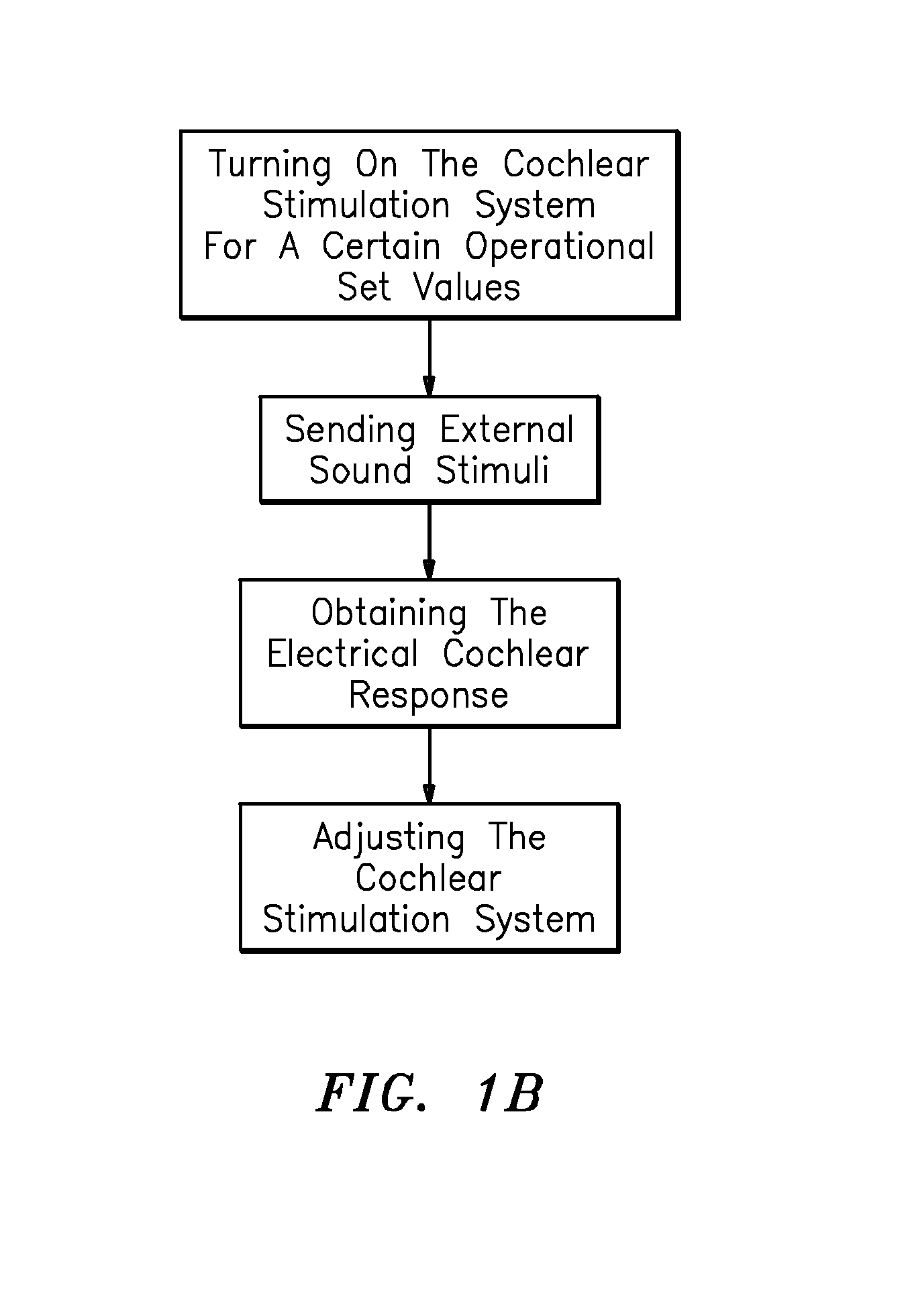Method and apparatus for obtaining and registering an electrical cochlear response ("ecr")
- Summary
- Abstract
- Description
- Claims
- Application Information
AI Technical Summary
Benefits of technology
Problems solved by technology
Method used
Image
Examples
Embodiment Construction
[0039]Measuring different parameters of the electrical activity generated by the intracochlear electrode surrounding cochlear structures, due to an electrical stimulation, provides information of the residual cochlear tissue behavior. Knowing this behavior makes it possible to adjust part or all of the operation parameters set values of a Cochlear Stimulation System, according to the particular needs of an implanted patient. An Electrical Cochlear Response (“ECR”) is present every time the implanted patient's Cochlear Stimulation System processes an external environmental sound. ECR is an essential element for in situ evaluation of the system.
[0040]FIG. 1 shows the ECR. This response is an electrical potential due to electrical current passing through a pair of intracochlear electrodes whenever a patient's implanted Cochlear Stimulation System processes an environmental sound; it also shows the ECR's characteristic parameters that describe a time varying electric potential waveform....
PUM
 Login to View More
Login to View More Abstract
Description
Claims
Application Information
 Login to View More
Login to View More - R&D
- Intellectual Property
- Life Sciences
- Materials
- Tech Scout
- Unparalleled Data Quality
- Higher Quality Content
- 60% Fewer Hallucinations
Browse by: Latest US Patents, China's latest patents, Technical Efficacy Thesaurus, Application Domain, Technology Topic, Popular Technical Reports.
© 2025 PatSnap. All rights reserved.Legal|Privacy policy|Modern Slavery Act Transparency Statement|Sitemap|About US| Contact US: help@patsnap.com



